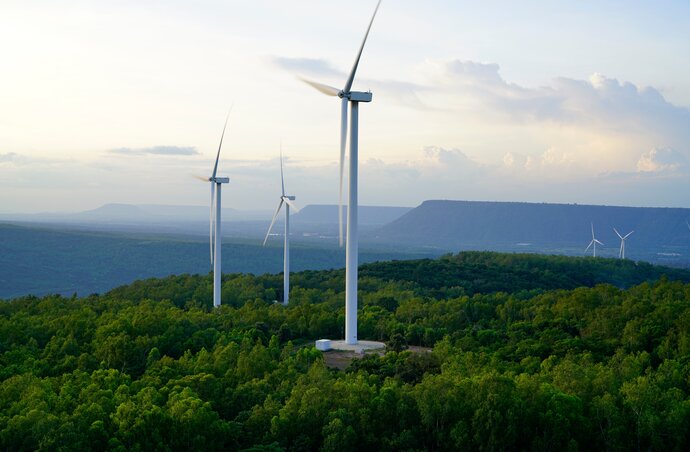Demonstrating No Net Loss or Net Gain for a wind project in a migratory corridor
AMEA Power's biodiversity goals
AMEA Power's biodiversity vision centres on minimising the project-related ecological impacts, particularly migratory bird species.
Project purpose
AMEA Power is developing the Amunet Wind Power Project, a 500.5 megawatt (MW) wind farm located approximately 9 km northwest of Ras Ghareb city in the wind-rich Gulf of Suez region in Egypt’s Red Sea Governorate. The purpose of our work was to help AMEA Power align with IFC Performance Standard 6 (PS6) on Biodiversity Conservation and Sustainable Management of Living Natural Resources.
The challenge
The Project is within the Red Sea/Rift Valley flyway for migratory soaring birds. This flyway connects breeding grounds in Europe with wintering areas in Africa. Over 1.5 million individuals from 37 species of migratory soaring birds and a suite of migratory passerines use it.
Five of these species are Critical Habitat-qualifying based on IFC PS6, and therefore, Net Gain (NG) is required for them. Five more species were identified as priorities for the Project because they are important components of Natural Habitat, requiring No Net Loss (NNL) under PS6. To meet the NNL/NG requirements, multiple offset actions will likely be required.
Our role
The Biodiversity Consultancy worked with the client to develop a Biodiversity Action Plan (BAP) that meets the requirements of IFC PS6 by setting out the Project strategy for mitigating, managing and offsetting biodiversity impacts to deliver NNL/NG.
Key deliverables
- Estimating the residual impacts on the ten identified priority species;
- Assessing the feasibility of offsets by evaluating the potential gains from a suite of offset options;
- Developing a BAP that shortlists offset options and covers the next steps for the Project to implement action and progress towards demonstrating NNL/NG for the priority species.
The approach
Estimating residual impacts
Quantifying the biodiversity risk associated with the project is the first step in determining the actions required to achieve NNL/NG.
We used collision risk models and considered the effect of the proposed mitigation strategies, turbine shutdown on demand and Bird Flight Diverters, to estimate the project's residual impacts from bird collisions with turbines and associated transmission lines.
Offset Feasibility Study
As most migrants pass rapidly through Egypt on passage, there is limited scope for conservation actions in the country.
To address this issue, we evaluated potential gains from 19 offset options for relevant species across the flyway, from northern Europe to southern Africa. We assessed each option for its ability to deliver the required gains, feasibility, implementation risk, cost, and co-benefits.
We have identified four key projects that, with effective implementation, will enable AMEA Power to fulfil its commitments under IFC PS6.
To ensure the success of these initiatives, The Biodiversity Consultancy collaborated closely with each offset project to develop a program designed to address AMEA Power’s specific objectives—both for the required gains and the appropriate monitoring for reporting.
Outcomes
The BAP developed by The Biodiversity Consultancy is a key component of a suite of documents enabling AMEA Power to secure lender financing and progress the Amunet Project. If the BAP is implemented successfully, conservation benefits will be realised via the improved status of the target bird species.
Make Nature Your Business
International Lenders Requirements
Receive biodiversity advice, technical support, and capacity building to ensure alignment with a wide range of international lender's standards
Fatality Estimation
Estimate the fatality risks of your wind power project and take action to mitigate risk.
Due Dilligence
Understand the risks and opportunities associated with your project and steps to align with an industry standard or framework.

